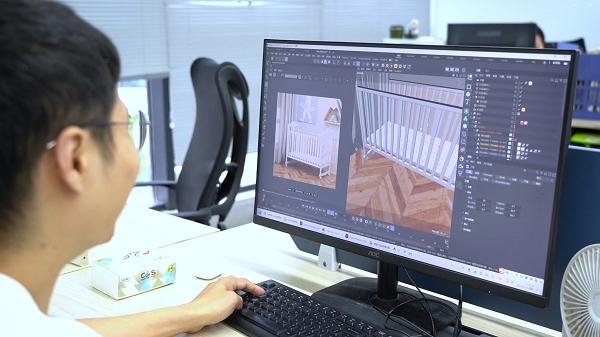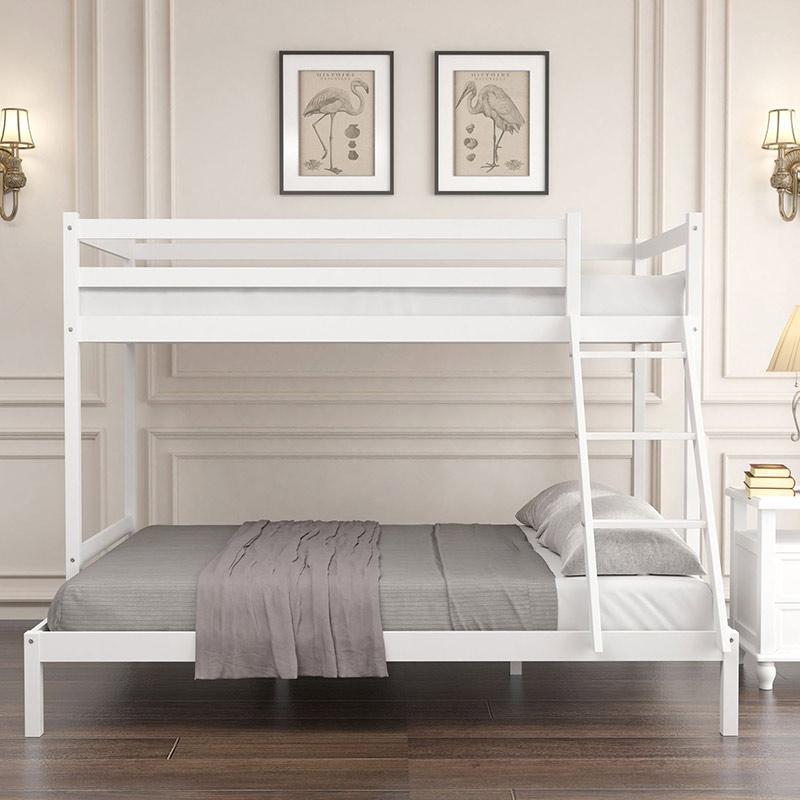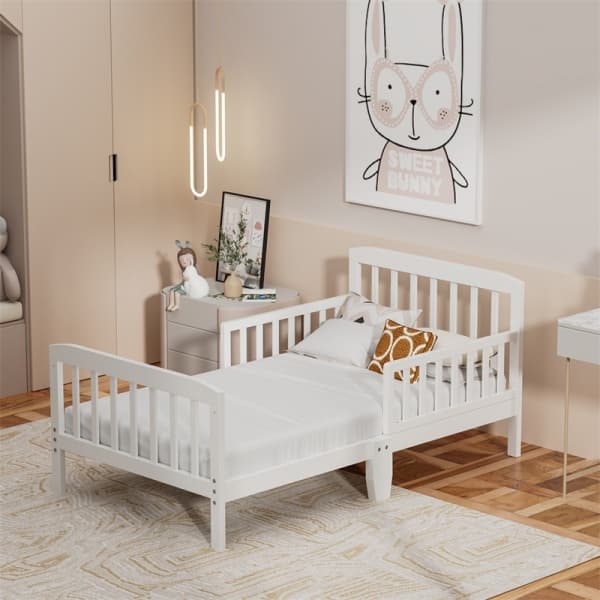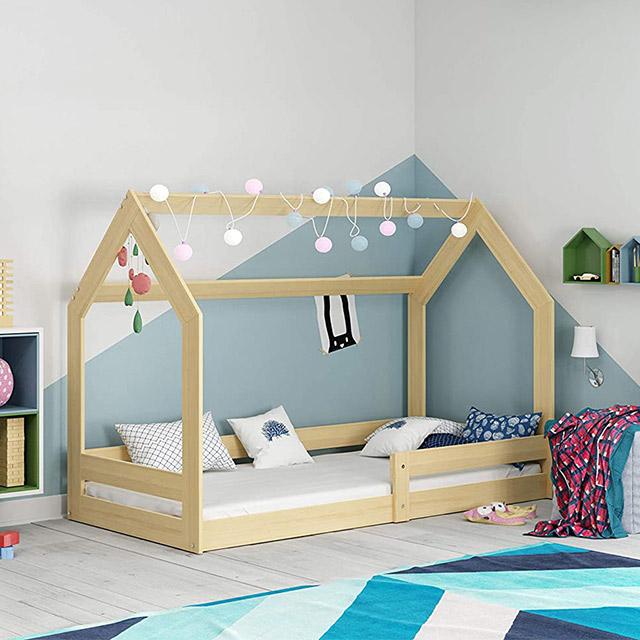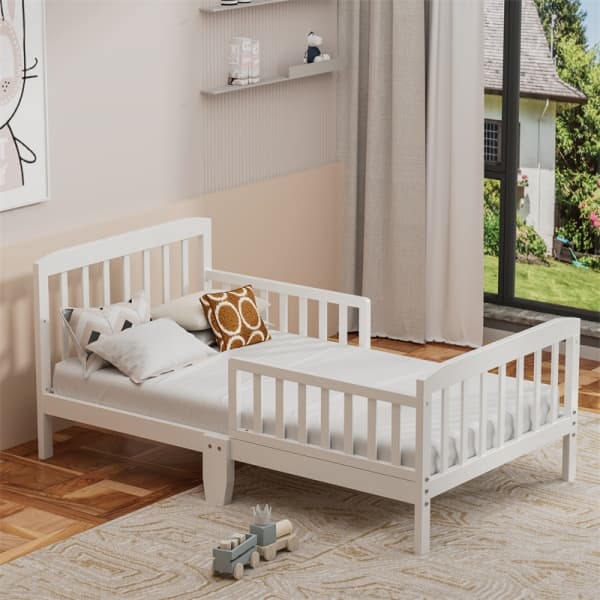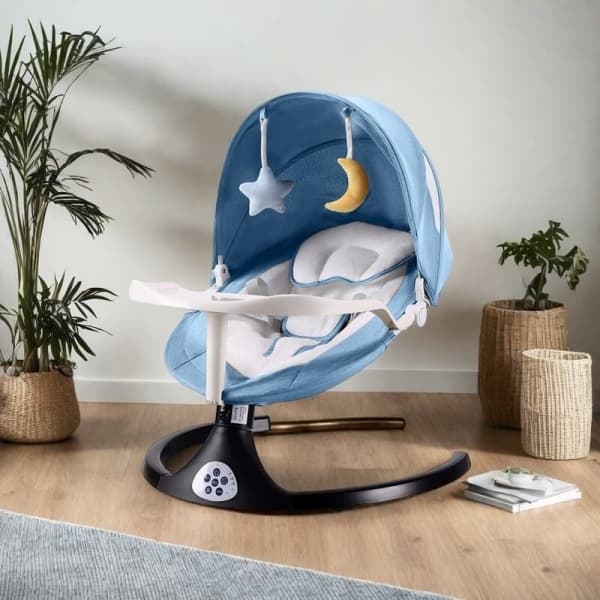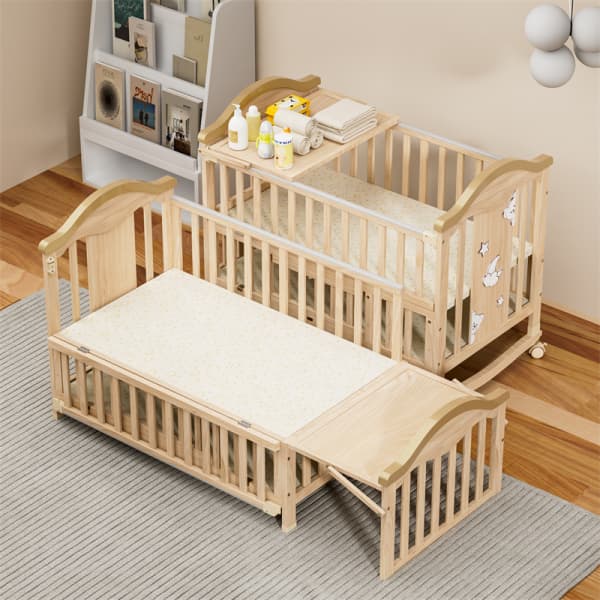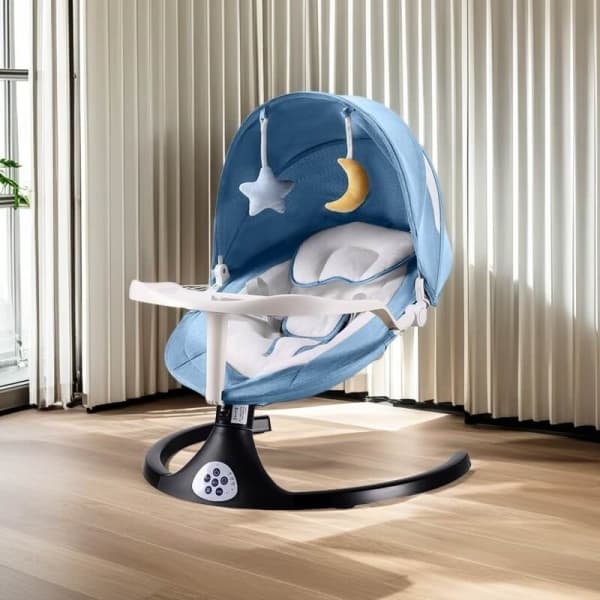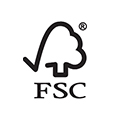Bunk beds are a practical and space-saving solution for homes, dormitories, and all kinds of shared living spaces. But as a piece of furniture that is much higher than the ground, its safety issues cannot be ignored.
Every year, bunk bed-related accidents occur due to improper design, inferior materials, or failure to comply with safety standards.
Understanding international bunk bed safety regulations, structural design principles, and material safety can help prevent these risks. This guide focuses on these factors and guides you on how to make the best purchase decision for different situations.
International Bunk Bed Safety Standards and Regulations
| Country/Region | Minimum Height of Guardrail | Maximum Allowable Clearance | Load-Bearing Test Standards |
| United States | 38cm | 9cm | 181kg impact force |
| European Union | 30cm | 7.5cm | 150kg static load |
| China | 30cm | 7cm | 60kg/m² distributed load |
| Australia | 35cm | 10cm | 120kg concentrated load |
US Bunk Bed Safety Standard (ASTM F1427 & CPSC)
Guardrail Height: Upper bunk guardrail minimum 15 inches (38cm), guardrail extension length must cover more than 80% of the bed length.
Clearance Limit: The gap between the guardrail and the bed frame shall not exceed 3.5 inches (9cm), and the vertical distance between the bunks shall be ≥ 27 inches (68.5cm).
Load-bearing test: The dynamic test must withstand 400 pounds (181kg) of impact force, and the static test must support 600 pounds (272kg).
Age Limit: Children over 6 years old can use the upper bunk (CPSC Notice No.5002).
EU Bunk Bed Safety Standard (EN 747-1:2023)
Structural safety: Maximum tilt angle of bed frame ≤15°, footrest step depth ≥30mm.
Environmental protection of materials: Formaldehyde emission of wood ≤0.1ppm (EN 717-1 standard).
Warning sign: A permanent sign “Children under 6 years old are prohibited from using the upper bunk” must be marked.
China Bunk Bed Safety Standard (GB 24430.1-2009)
Gap requirements: The diameter of any hole in the bed must be less than 7mm or greater than 12mm (to prevent limbs from getting stuck).
Impact test: Apply a force of 600N to impact the bed structure, and the deformation must be less than 5%.
Heavy metal limit: Migration element lead ≤90mg/kg, chromium ≤60mg/kg (GB 18584).
Australian/New Zealand Standard (AS/NZS 4220:2020)
Anti-fall design: The upper bunk must be equipped with a removable anti-roll baffle.
Connector specifications: Bolt diameter ≥ 8mm, nuts must be equipped with anti-loosening devices.
Warning label: The maximum user weight must be marked in English/Maori.
Safe Bunk Bed Structure Design
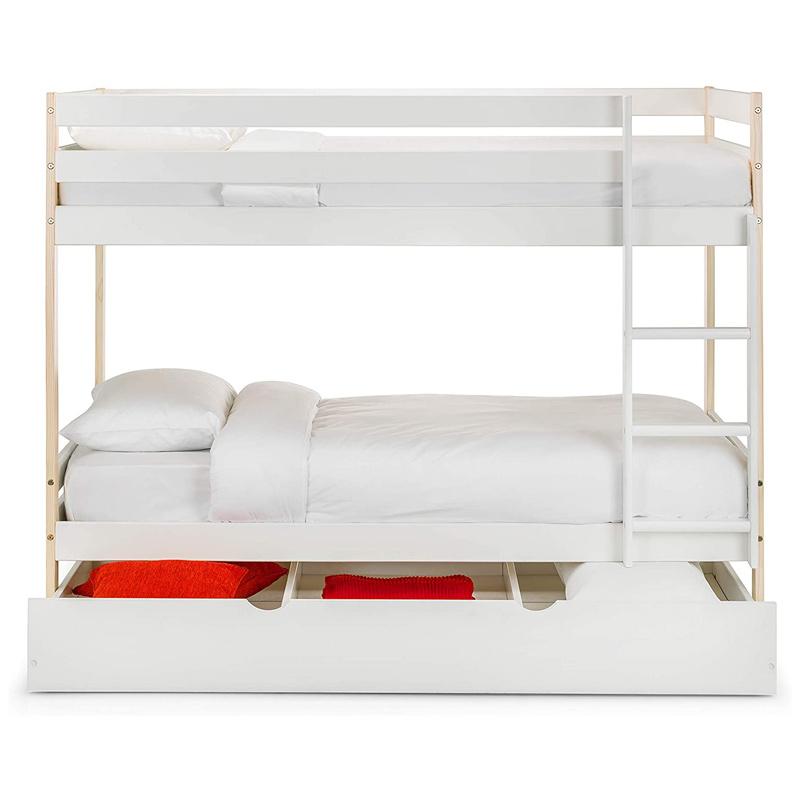
There are always some subtle differences in the safety standards and regulations of bunk beds in different countries, making it difficult to form unified regulations.
However, based on the basic safety guarantee of bunk beds, there are some common standards and functions that every bunk bed should strictly comply with. When purchasing, you should first check whether the following aspects of the product meet the standards:
Guardrail Height and Gap Requirements
Guardrails are the core line of defense against falls and provide adequate protection for children sleeping on the upper bunk. The vertical height of the upper bunk guardrail must not be less than 15 inches (38cm), because when a child sits up, his chest height is about 25cm, and a 38cm guardrail can provide effective protection.
Equally critical is the guardrail clearance limit. Generally, the gap should not exceed 3.5 inches (9 cm) to prevent the child’s head from accidentally getting stuck.
Ladder and Step Design Standards
Each step or rung should be wide enough to accommodate a child’s feet and allow the feet to fit completely against the step.
Fixed ladders have better stability, but movable ladders must be equipped with non-slip rubber pads and locking devices. It is recommended to give priority to Z-type ladders with non-slip grooves on the footrest surface, which have a grip three times higher than straight ladders.
Bedboard Load-Bearing Test Standard
Many bunk beds are designed to accommodate children or teenagers, but the bedboard should also be durable enough and must pass rigorous load-bearing tests.
Many standards set specific guidelines for weight testing, usually involving a weight load test of at least 200 pounds (90 kg) for a single bed.
Some standards also include an assessment of performance under any impacts that might occur when a child jumps or plays on the bed, which you may want to focus on if your child is overly active.
Bunk Bed Material and Process Safety
For elevated furniture like bunk beds, safety depends not only on design but also on every detail of materials and craftsmanship. Below, we will introduce some basic considerations for bunk bed materials and the craftsmanship that contributes to safety.
1. Material Selection
High-quality hardwoods such as oak, maple, or beech are widely recognized for their ability to withstand great weight without bending or cracking.
Pine is a relatively softwood, which is slightly less sturdy than the above hardwood types, and its load-bearing capacity is also suitable for processing into bunk beds, and it has considerable safety guarantees.
What you need to be wary of is bunk beds made of composite materials, which have significant risks. They are artificial woods made by mixing various materials, and formaldehyde is usually used as a binder during the production process.
Although some composite materials are labeled “low VOC” or “formaldehyde-free”, these standards are difficult to monitor in mass-produced furniture, and not all manufacturers adhere to strict guidelines. You need to be careful when choosing this type of bunk bed.
2. Manufacturing Process
High-quality manufacturing processes can not only improve the stability and durability of bunk beds but also effectively prevent potential safety hazards such as shaking, loosening, or accidental falling off.
Material processing and treatment: Responsible manufacturers will strictly dry and treat the wood to avoid cracks or corrosion caused by moisture or temperature changes. Whether it is wooden or metal materials, all bed frames need to be finely polished, especially metal bunk beds, which should not have sharp edges or exposed metal tips.
Structural integrity: The connection points of the bed frame need to use high-strength connectors, such as thickened bolts, reinforced angle irons, etc. For metal bunk beds, appropriate welding or joining techniques must be used to ensure that the frame remains stable.
Quality control and safety testing: The products you choose should have undergone strict safety testing before leaving the factory, including structural stability testing, load-bearing testing, and fall-proof testing, to ensure that each bed meets relevant safety standards.
Bunk Bed Age Restrictions and Safety Precautions
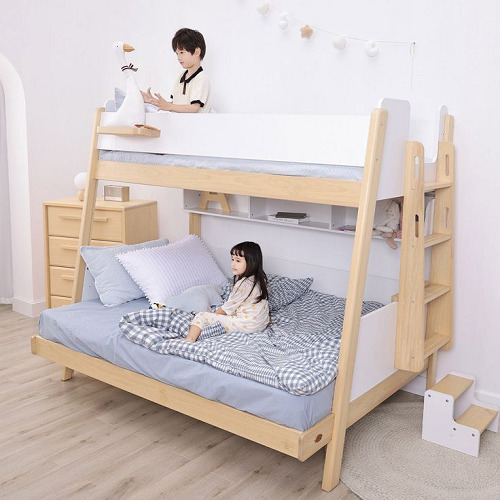
According to international furniture safety standards (such as ASTM F1427 in the United States and EN 747 in the European Union), it is clearly required that the upper bunk bed should not be used under the age of 6.
This restriction is based on the physical development characteristics of children: children under the age of 6 do not yet have perfect balance and danger prediction awareness, and their body coordination makes it difficult to cope with climbing movements on the upper and lower bunks. They may roll unconsciously during sleep at night, resulting in the risk of falling.
There is usually no strict age limit for the lower bunk, even children under 3 years old can use it, but it is recommended to use guardrails or choose safer designs, such as low beds with fences, which will look safer.
For adolescents, although there is no clear upper age limit, it is recommended to stop using the upper bunk when the height exceeds 170cm or the weight exceeds the upper bunk load-bearing standard (usually ≤80kg).
When using, you need to pay attention to the following aspects:
- Children should be strictly prohibited from jumping, fighting, and other dangerous behaviors during the use of the upper bunk.
- The ladder adopts a non-slip design and the inclination angle is ≤65 degrees. It is recommended to configure luminous stickers to assist with night identification.
- Make sure the bunk bed is ≥75cm away from the ceiling light fixture, and no sharp furniture should be placed within a radius of 1.5 meters.
- Lay a cushioning mat with a thickness of ≥3cm on the ground to add an extra layer of protection.
- Do not exceed the load-bearing limit of the bed frame, especially since the upper bunk bed is only suitable for single use.
- Check the screws every few months to see if they are loose to prevent the bed from shaking and affecting safety.
Analysis of Common Bunk Bed Safety Hazards
According to recent data, structural hazards account for as high as 43%, mainly manifested as the risk of falling due to insufficient guardrail height. Experimental data show that when the height of the guardrail is less than 14cm, the probability of falling during sleep for children aged 6-8 increases to 17%.
The second is the design defects of the ladder steps. The large spacing between the ladder steps or the lack of anti-slip measures can easily lead to falls.
The biggest hidden danger for young children using bunk beds is that they have low comprehension ability and low safety awareness, and they play and fight on the bed, causing falling accidents.
Cognitive misunderstandings are particularly worthy of vigilance. Many guardians mistakenly believe that “guardrails are absolutely safe”, ignoring that the thickness of the mattress exceeding the standard (standard ≤15cm) will actually reduce the effective height of the guardrail.
Purchase Recommendations for Different Scenarios
1. Family bunk beds (children’s bedrooms)
Core needs: Considering both children’s activity safety and growth adaptability
Guardrail protection: Choose full-surrounding guardrails (on both sides + head of the bed) for the upper bunk.
Ladder stability: Choose a ladder with wide, non-slip steps. If space permits, it is recommended to choose a storage staircase cabinet that is integrally formed with the bed, which is safer than a traditional ladder.
2. Bunk beds for rental properties or hotels
Core needs: Safety for adult use + long-term maintenance convenience.
Universal guardrail design: Since guests may not be familiar with bunk beds, choose a design with high guardrails on all sides for additional safety.
Stairway access instead of ladder: Stairs with handrails are generally safer than vertical ladders and are ideal for guests who are not familiar with bunk beds.
High load-bearing capacity: Bunk beds for rental properties should adapt to different users, so frames with high load limits (preferably more than 250 pounds per bunk bed) are ideal.
3. Dormitories for schools/training institutions
Core requirements: High strength and durability + group behavior control.
Fixed and safe ladder: A ladder that is permanently fixed and designed to be built-in (not external).
Fireproof and sturdy materials: Metal bunk beds with fireproof coatings are usually the first choice for dormitories due to durability and safety requirements.
Conclusion
Safety is always a top priority when choosing and using a bunk bed. From meeting international safety standards to choosing the right materials and design, every detail plays an important role in ensuring a safe sleeping environment.
By being aware of potential dangers and making informed purchasing decisions, parents, facility managers, and homeowners can provide a safe and comfortable experience for users of all ages.
Recommended Related Articles:

